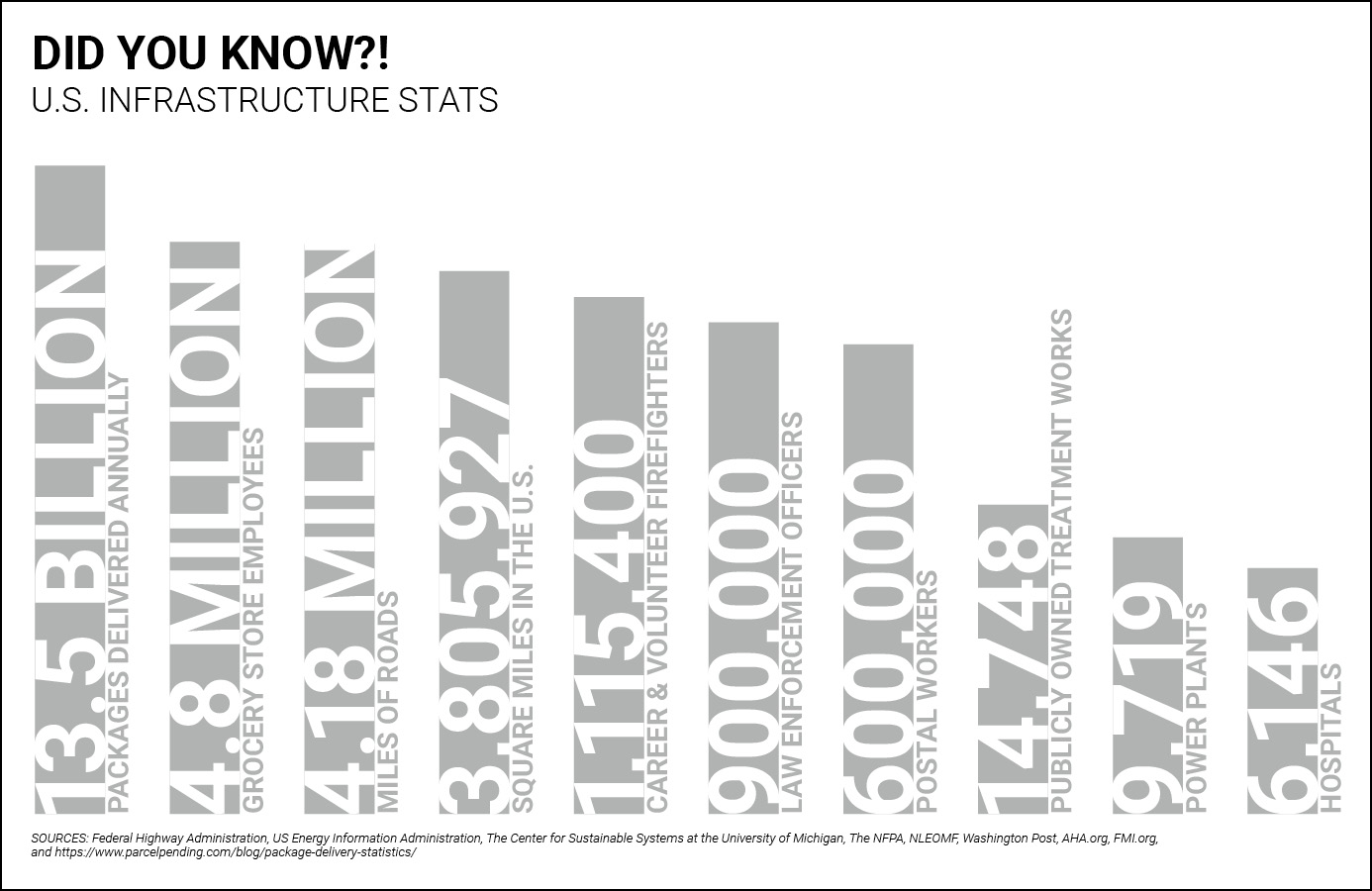The United States has one of the most developed infrastructures on the planet. It offers unmatched reliability for electricity, water, gas, internet, food, and fuel in every corner of our nation. It takes millions of people to build, maintain, and repair these incredibly complex infrastructures, but many Americans take it for granted.
While the medical community has been deservedly commended for its willingness and ability to work long hours in hazardous conditions, they are not the only heroes emerging from the 2020 coronavirus (COVID-19) crisis. The people who run our country’s infrastructure have also adapted to unprecedented challenges. Even when facing viral threats, they’ve efficiently managed electric, water, gas, communications, roads, and delivery systems.
The U.S. Infrastructure has Never Been Tested Nationwide
While this industry’s exceptional preparedness measures have been tested regionally in the past, in the COVID-19 crisis, emergency planning was put into action in every part of the country for the first time ever. While these emergency measures were not designed explicitly for a viral threat, by preparing the infrastructure to withstand the effects of storms, earthquakes, fires, floods, volcanoes, and other natural and manmade disasters, the country’s infrastructure had deep and comprehensive emergency procedures in place. Many unsung heroes were able to keep America’s lights on, quite literally, across a service area covering 3.8 million square miles.
Adjustments were made to protect all types of employees and field workers from the virus, so that American infrastructure, deemed essential during this crisis, could function at full capacity. Teams in the essential-classified industries were prepared to operate with a reduced workforce and an uncertain supply chain for extended periods.
For example, in the energy world, this rapid response is supported by procedures that were fortified after 9/11. According to the Office of Cybersecurity, Energy Security, and Emergency Response, during this crisis, the energy infrastructure has operated under the Emergency Support Function (ESF) #12, in which the Department of Energy facilitates the reestablishment of damaged energy systems and components when activated by the Secretary of Homeland Security for incidents requiring a coordinated Federal response under the Stafford Act.
Flagger Force Adapted to Keep Traffic Clients and our Employees Safe
At Flagger Force, our emergency plans are also designed to protect our employees while still providing the services needed to ensure that all kinds of infrastructure workers are supported with safe work zones. Through the use of our mobile employee app and email communications, we were able to deliver real-time updates to all employees, clients, and partners as the situation changed from a potential threat to an ongoing crisis.
Our clients rely on our frontline, essential services to maintain safe, efficient, and affordable transport networks. Providing safe work zones enabled utilities and transportation to remain in top operating condition. As a result, the necessary supply chains were able to deliver food, fuel, and medical supplies reliably.
Our infrastructure has been tested, but has it passed? While some parts of our infrastructure exceeded expectations, some segments have stumbled. We can all learn lessons from the industries that successfully kept America’s infrastructure working. Here are some Occupational Safety and Health Administration guidelines many essential industries currently follow:
Be Prepared Checklist
- The best time to prepare to respond to an emergency is before it happens.
-
Consider protocol for all kinds of emergencies, including fire, explosions, short-term weather shutdowns, natural disasters, such as earthquakes and floods, and viral threats.
-
Create clear emergency plans in case employees need to evacuate your building and designate a gathering place where employees can be accounted for. Post escape routes. Conduct periodic drills.
-
Establish procedures for employees who must shut down critical operations, operate fire extinguishers, or perform other essential services before evacuating.
-
Create operational contingency plans in case your employees can’t work in corporate offices because of health issues, structural issues, or damage from a natural disaster.
-
Create off-site storage for originals or duplicates of critical documents, including accounting records, legal documents, your employees’ emergency contact lists, and other essential records.
-
Develop a decentralized communication plan to issue instructions in case of a disruption of business or issue with your location(s), and make sure all employees are familiar with that plan.
-
Assign emergency communications tasks to a team that can update your website, create social media messaging, assemble emails, and handle public relations issues. Create an emergency communications kit with instructions for messages for different scenarios.
-
Conduct continual cloud back-ups of files and business information, and make sure you are using a server backup located at a secure, remote location.
-
Keep necessary healthcare supplies on hand, and make sure your first aid kits are located throughout the building and are continually stocked. Moving forward, include hand
sanitizers, sanitized gloves, and face masks as part of every worker’s safety kit.


